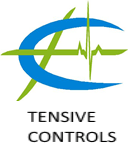
A Platform Technology for Drug-Like Peptides
Kenneth Gruber
President/Chief Scientific Officer, Tensive Controls, Inc.
In the age of proteomics, there is increasing need for an approach to enhance the therapeutic activities of peptides, especially those with regulatory activities applicable to cancer and infectious diseases. Peptides have high activity and specificity, and low non-specific toxicity; desirable characteristics for a drug. However, their lack of oral activity and blood-brain-barrier transport, and their rapid metabolism/excretion greatly reduces clinical utility.
We developed a platform technology that transforms natural or synthetic peptide sequences into a “drug-like” molecule: orally active, with the ability to cross the blood-brain barrier, and having an in vivo half-life of hours. The “apparent” transport effects appear to be due to the peptide acting as a substrate of the multispecific bile acid transporter, similar to cyclosomatostatin and several other cyclized peptides. Using a progressive series of melanocortin peptide analogs and solution NMR spectroscopy, we defined the two critical structural aspects of the technology: ideally a side-chain cyclized peptide that is maintained in a β-conformation through intramolecular hydrogen bonds, and a C-terminal dipeptide extension composed of non-polar residues.
The platform can be used in several ways: cyclization of the peptide sequence of interest plus a C-terminal extension, or (if the biological activity resists cyclization) attachment of the peptide to the N-terminus of a cyclized “transporter” sequence. In the later approach, the hybrid peptide maintains the transport/drug-like features of the cyclized transporter.
As proof of concept, we applied our platform to four types of peptides with potentially important therapeutic activity. These were an anti-cancer cachexia agent (preventing the “wasting” of body mass in many diseases), an anti-angiogenic/anti-proliferative anti-cancer agent, several antiviral peptides, and a hybrid anti-microbial/anti-biofilm peptide for hospital-associated antibiotic-resistant infections. With latter, the anti-microbial peptide was cyclized, while the anti-biofilm sequence required an alpha helix for activity. Combining both peptides into a single structure preserved and even enhanced their respective microbiological activities, producing a drug candidate for in vivo testing.
Rodent and canine safety studies demonstrated that therapeutic peptides produced by the platform were devoid of cardiovascular, serological or blood chemistry side-effects. A CMO has already made several of the above therapeutic peptides to a cGMP standard, and these peptides maintain stability in FDA standard studies. Several of the peptides from the platform are in formal FDA pre-clinical development. Thus, the technology appears to be a commercially feasible approach to convert peptides into drug-like agents.